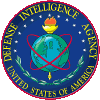

The 1960s Sino-Soviet split resulted in diminished aid to North Korea. Kim Il-song carefully decoupled aid from political or ideologic support for either side to maintain a minimal level of assistance. To compensate for lost aid, Pyongyang emphasized programs such as "worker storm teams," "speed battles," and "on-the-spot" guidance from Kim Il-song. These encouraged increased production by appealing to ideology, patriotism, and loyalty rather than economic incentives. The efforts were expensive in terms of both workers and equipment, and the achievements were largely symbolic, short-term, and not interrelated. Kim Il-song's frequent micromanagement and often conflicting party directives confused production priorities, further aggravating the economic situation. Consequently, Kim declared the second 7-Year Plan a failure in 1984 and enlisted economic assistance from "friendly foreign capitalists." This change expanded foreign trade and allowed the government to approach the West and Japan for technology and capital investment.
In 1989-1990, North Korean imports were $872 million more than exports. The $2.2 billion in imports was largely machinery and equipment, crude oil, and arms from the Soviet Union; oil, petroleum, and coking coal from China; and consumer goods from the West and Japan. Exports were largely machinery and equipment, rolled ferrous metals, magnesia powder, and clothing to the Soviet Union; iron, steel, coal, and nonmetallic minerals to China; and food stuffs and raw materials to the West and Japan.
Financial Status
Pyongyang is in a very poor international financial position, albeit one largely of its own making. By the end of
1990, the total estimated debt owed to Western and communist creditors surpassed $6 billion. This debt is a
serious problem because of the economic structure and government policies, rather than the debt's size.
To compensate for its lack of foreign exchange, North Korea barters agricultural products, fish, and raw minerals to pay old loans and maneuver for new funding. Since these measures have not proved successful, in 1984 the People's Supreme Assembly promulgated the Joint Venture Law, which is similar to the 1979 Chinese Joint Venture Law. With the law's stated goal of encouraging friendly capital and technologic investments, North Korea targeted development in manufacturing, construction, transportation, science and technology, and tourism. However, most of these proposals were not viable. Construction has stopped on one of the earliest projects, a North Korean-French hotel, because of differences about managing the finished hotel. Some prejoint venture hydroelectric projects with the Chinese; small-scale mineral development projects in Africa; metallurgical projects in Eastern Europe; and manufacturing, agricultural, fishing, and machine tool production projects with the Soviet Union have been moderately successful.
Over the last few years, Pyongyang's international financial standing has weakened. In 1985, North Korea's credit was rated as the worst of over 100 countries. In 1987, a group of Western banks officially declared North Korea bankrupt and considered seizing its major overseas assets, estimated at $100 million. Trade among Eastern Europe, China, the Soviet Union, and South Korea has grown rapidly. Although Pyongyang is furious about this trade, it can do little to change the situation. Pyongyang rebuffed plans for passing the goods through North Korea and sharing some benefits from this trade. Reportedly, some trade does occur between North and South Korea. South Korea is considering establishing a North-South Economic Cooperation Fund of about $400 million to encourage trade expansion and to ease tensions. This fund would invest in North Korean ventures that advance cooperation and reconciliation.
No indications are present that North Korea's international economic position will improve. Pyongyang is chronically short of hard currency. Moscow, a major trading partner, accepted barter agreements in the past, but now the Soviets are demanding cash payment. In fact, even if the North took positive steps immediately, it could not change its dismal performance in international commerce for many years.
Economic Assistance
During Japan's colonization of Korea, transportation, health, and finance improved --- all to serve Japanese
businesses. By the end of World War II, the economy in the north concentrated largely on industrial producer
goods and mining. After World War II, the Soviet Union provided weapons and military training and continued
to develop heavy industry and mining at the expense of agriculture and light manufacturing.
Throughout the Korean war the Soviets continued to provide most military equipment and materiels, while massive numbers of Chinese soldiers fought in the war and suffered an estimated 1 million casualties. After the war, 80,000 Chinese troops stayed in Korea to train the North's military and provide logistic support, essentially allowing 80,000 Koreans to enter the civil sector. Until 1958, the Chinese presence reduced the loss of Korean technicians, officers, and party members killed in the war. In 1949, North Korea's population was estimated at 9.6 million; by 1953, it was only 8.5 million.
At the end of the Korean war, the Soviets and the Chinese helped rebuild the military. The Soviet Union provided $250 million in grants, materials, and consumer goods. The Chinese forgave $114 million in debts and provided $325 million in commodity grants between 1954 and 1957. From 1956 to 1961, the Soviets provided about $75 million in economic aid, annulled debts of $190 million, and rescheduled payments for an additional $35 million of debt. In 1960, the Chinese provided a $105 million loan and technical assistance. Overall, the Soviets provided 40 percent, the Chinese 37 percent, and Eastern Europe 3 percent of the estimated $1.4 billion in plants and equipment Pyongyang received between 1946 and 1960. By the early 1960s, the Sino-Soviet confrontation reduced North Korean aid, but the Soviets still provided about $600 million in military aid between 1961 and 1972. However, continuing economic problems forced Pyongyang to turn to Japan and the West for loans.
This military equipment, economic aid, and technical aid could appear as a Soviet attempt to placate Pyongyang for Moscow's participation in the Seoul Olympics or as a counterbalance for new equipment the South received. It also could be an attempt to soften the shock of cultural and economic ties with South Korea.
